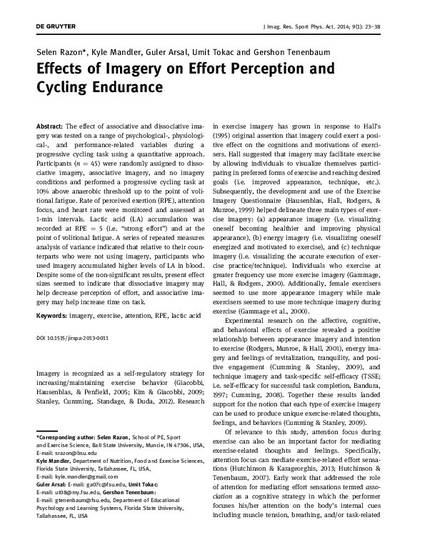
The effect of associative and dissociative imagery was tested on a range of psychological-, physiological-, and performance-related variables during a progressive cycling task using a quantitative approach. Participants (n ¼ 45) were randomly assigned to dissociative imagery, associative imagery, and no imagery conditions and performed a progressive cycling task at 10% above anaerobic threshold up to the point of volitional fatigue. Rate of perceived exertion (RPE), attention focus, and heart rate were monitored and assessed at 1-min intervals. Lactic acid (LA) accumulation was recorded at RPE ¼ 5 (i.e. “strong effort”) and at the point of volitional fatigue. A series of repeated measures analysis of variance indicated that relative to their counterparts who were not using imagery, participants who used imagery accumulated higher levels of LA in blood. Despite some of the non-significant results, present effect sizes seemed to indicate that dissociative imagery may help decrease perception of effort, and associative imagery may help increase time on task
Available at: http://works.bepress.com/selen-razon/5/
